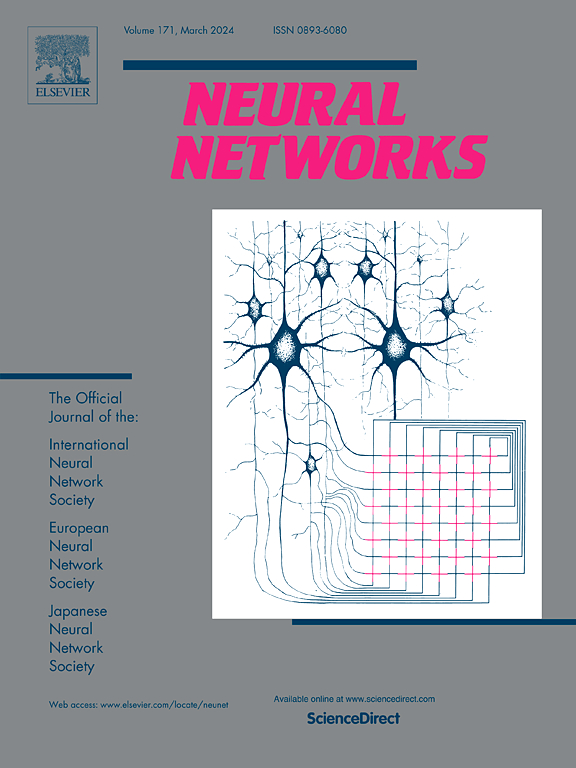利用网络梯度优化受限玻尔兹曼机的连通性
IF 6
1区 计算机科学
Q1 COMPUTER SCIENCE, ARTIFICIAL INTELLIGENCE
引用次数: 0
摘要
利用稀疏网络连接深度神经网络中的连续层最近被证明可以为大规模的最先进模型提供好处。然而,网络连通性对浅层网络的学习性能也起着重要的作用,例如经典的受限玻尔兹曼机(RBM)。有效地寻找稀疏连接模式以提高浅网络的学习性能是一个基本问题。虽然最近的原则方法明确地将网络连接作为必须优化的模型参数,但它们通常依赖于显式惩罚或网络稀疏性作为超参数。这项工作提出了网络连接梯度(NCG),这是一种寻找rbm最佳连接模式的优化方法。NCG利用了网络梯度的思想:给定特定的连接模式,它确定每个可能连接的梯度,并使用梯度来驱动连续的连接强度参数,该参数反过来用于确定连接模式。因此,虽然学习速率不同,但在不改变模型经典的基于能量的目标函数的情况下,真正实现了RBM参数的学习和网络连接的学习。将该方法应用于MNIST和其他数据集,结果表明,对于样本生成和分类的基准任务,找到了较好的RBM模型。结果还表明,NCG对网络初始化具有鲁棒性,并且能够在学习过程中添加和删除网络连接。本文章由计算机程序翻译,如有差异,请以英文原文为准。
Optimizing connectivity through network gradients for Restricted Boltzmann Machines
Leveraging sparse networks to connect successive layers in deep neural networks has recently been shown to provide benefits to large-scale state-of-the-art models. However, network connectivity also plays a significant role in the learning performance of shallow networks, such as the classic Restricted Boltzmann Machine (RBM). Efficiently finding sparse connectivity patterns that improve the learning performance of shallow networks is a fundamental problem. While recent principled approaches explicitly include network connections as model parameters that must be optimized, they often rely on explicit penalization or network sparsity as a hyperparameter. This work presents the Network Connectivity Gradients (NCG), an optimization method to find optimal connectivity patterns for RBMs. NCG leverages the idea of network gradients: given a specific connection pattern, it determines the gradient of every possible connection and uses the gradient to drive a continuous connection strength parameter that in turn is used to determine the connection pattern. Thus, learning RBM parameters and learning network connections is truly jointly performed, albeit with different learning rates, and without changes to the model’s classic energy-based objective function. The proposed method is applied to the MNIST and other data sets showing that better RBM models are found for the benchmark tasks of sample generation and classification. Results also show that NCG is robust to network initialization and is capable of both adding and removing network connections while learning.
求助全文
通过发布文献求助,成功后即可免费获取论文全文。
去求助
来源期刊

Neural Networks
工程技术-计算机:人工智能
CiteScore
13.90
自引率
7.70%
发文量
425
审稿时长
67 days
期刊介绍:
Neural Networks is a platform that aims to foster an international community of scholars and practitioners interested in neural networks, deep learning, and other approaches to artificial intelligence and machine learning. Our journal invites submissions covering various aspects of neural networks research, from computational neuroscience and cognitive modeling to mathematical analyses and engineering applications. By providing a forum for interdisciplinary discussions between biology and technology, we aim to encourage the development of biologically-inspired artificial intelligence.
 求助内容:
求助内容: 应助结果提醒方式:
应助结果提醒方式:


